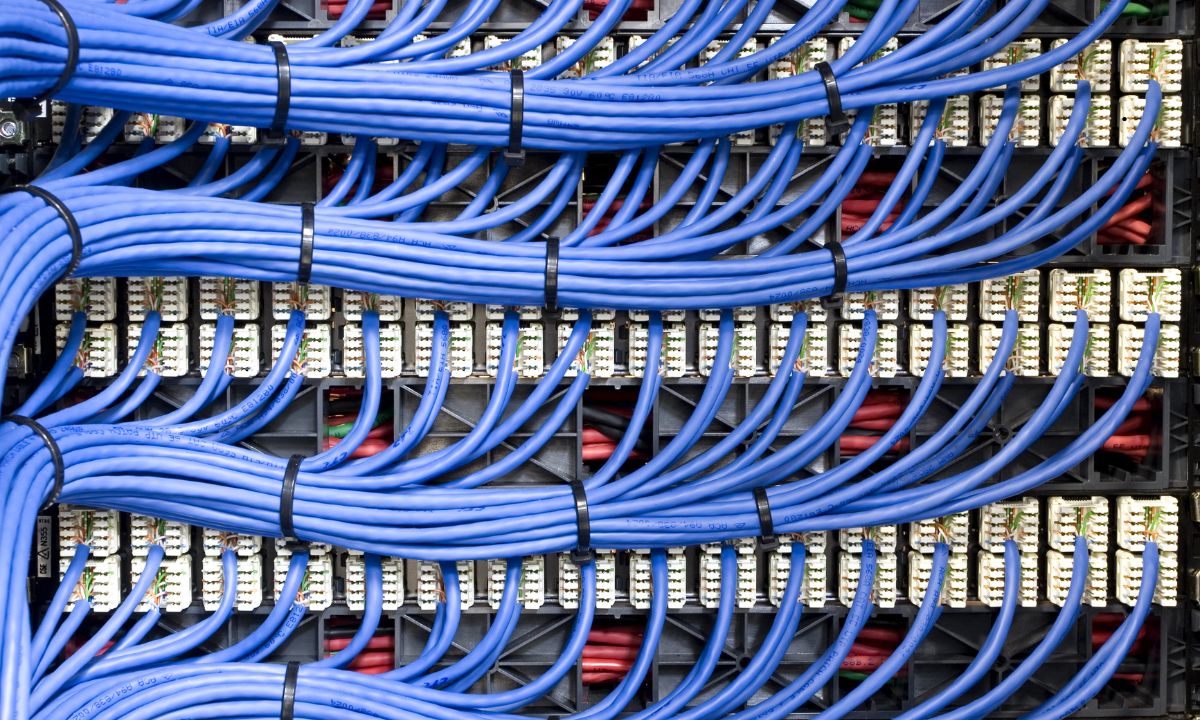As artificial intelligence (AI) reshapes industries, the data centers powering these innovations face unprecedented demands for speed, scale, and adaptability. Structured cabling—the standardized, organized framework of wiring—remains the backbone of these facilities. However, its traditional design is increasingly misaligned with the dynamic, high-performance needs of AI-driven infrastructure. This whitepaper explores why structured cabling, while reliable, is overdue for innovation, and proposes forward-thinking solutions to meet the future of AI data centers.
Introduction
Structured cabling has long been a cornerstone of data center design, providing a scalable, maintainable way to connect servers, storage, and networking hardware. Governed by standards like TIA-942 and ISO/IEC 11801, it ensures consistency and performance. Yet, as AI workloads—such as large language model training and real-time analytics—push data centers to their limits, the limitations of this decades-old approach are becoming clear. Bandwidth ceilings, physical complexity, and slow reconfiguration times threaten to bottleneck the very systems driving technological progress.
The Current State of Structured Cabling
Today’s structured cabling systems rely heavily on fiber optic and high-grade copper solutions, capable of delivering speeds up to 400Gbps or 800Gbps in advanced deployments. These systems excel in:
- Organization: Labeled runs and modular patch panels simplify maintenance.
- Scalability: Standardized designs support incremental growth.
- Reliability: Adherence to industry standards minimizes downtime.
However, AI data centers demand more. Compute clusters for AI require ultra-low latency, massive throughput (often exceeding petabytes per second), and dense, power-hungry hardware configurations. Traditional cabling struggles to keep pace, revealing gaps in flexibility, density management, and fault tolerance.
Challenges Facing Structured Cabling
- Bandwidth Limitations: Even top-tier fiber optic cables face practical ceilings as AI workloads scale beyond current standards.
- Physical Constraints: High-density racks create cabling congestion, complicating airflow and increasing installation time.
- Adaptability: Manual rerouting or expansion is slow, clashing with the rapid deployment needs of AI infrastructure.
- Resilience: Single points of failure in cabling can disrupt entire systems, a risk amplified by AI’s reliance on continuous uptime.
- Cost and Complexity: Upgrading or maintaining structured systems requires significant labor and investment, straining budgets.
The Case for Innovation
To support the next generation of AI data centers, structured cabling must evolve. Incremental improvements—faster cables or denser panels—won’t suffice. A paradigm shift is needed to align cabling with AI’s trajectory. Key areas for innovation include:
- Dynamic Optical Switching
Replacing static fiber runs with optical switches could enable real-time reconfiguration of data paths. This reduces physical cabling, cuts latency, and adapts instantly to shifting workloads. - Wireless Alternatives
Technologies like Li-Fi (light-based communication) or advanced RF could supplement or replace wired connections in specific zones, reducing clutter and enabling faster setup. Challenges like interference must be addressed, but the potential is significant. - Smart Cabling Systems
Embedding sensors and diagnostics into cables could create self-monitoring networks that predict and mitigate failures before they occur, boosting reliability. - Modular, Plug-and-Play Designs
Pre-terminated, interchangeable cabling modules—akin to a “LEGO” approach—could slash installation and upgrade times, offering flexibility without sacrificing structure. - Integration with Cooling and Power
Hybrid cabling that combines data, power delivery, and even liquid cooling conduits could streamline dense AI racks, addressing multiple infrastructure needs in one system.
Benefits of a Revolutionized Approach
- Performance: Higher bandwidth and lower latency to match AI’s data hunger.
- Agility: Faster deployment and reconfiguration to keep pace with innovation cycles.
- Efficiency: Reduced physical footprint and improved energy use through better airflow and integration.
- Resilience: Proactive fault detection and fewer single points of failure.
Barriers to Adoption
Innovation isn’t without hurdles. New cabling systems face:
- Cost: R&D and deployment of untested tech carry financial risk.
- Compatibility: Legacy infrastructure and standards like TIA-942 may resist disruption.
- Expertise: Technicians need retraining to handle novel systems.
Despite these challenges, the pressure of AI’s growth will likely force change. Early adopters who invest in next-gen cabling could gain a competitive edge in performance and operational efficiency.
Conclusion
Structured cabling has served data centers well, but its static, labor-intensive nature is increasingly at odds with the demands of AI-driven innovation. The time for incremental tweaks is over—a bold reimagining is overdue. By embracing dynamic, intelligent, and integrated cabling solutions, the industry can build data centers that not only support today’s AI but anticipate tomorrow’s breakthroughs. Stakeholders—operators, engineers, and vendors—must collaborate to turn this vision into reality, ensuring the infrastructure evolves as fast as the intelligence it powers.
Call to Action
Data center leaders should:
- Assess current cabling against AI workload projections.
- Pilot emerging technologies like optical switching or smart cables in controlled environments.
- Advocate for updated industry standards that prioritize flexibility and resilience.
The revolution in structured cabling isn’t just an option—it’s an imperative for the AI era.











